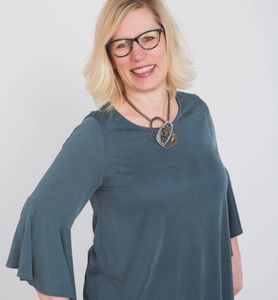
Prepared for Preschool?
Choosing the right fit for your child
by brenda maas
Young children learn through play. This is an undisputed fact. Exploration, observation, cause-and-effect, repetitive actions—these are all ways that humans, from the time that they are infants, figure out how the world around them works. And, in the years before school—the preschool years—exploration is the primary driving force behind little minds.
As parents, we are the primary educators of our children—especially prior to their elementary school years. However, due to a variety of reasons including the increased number of dual-income families, single-parent homes and families living below the poverty line, many children are entering kindergarten unprepared to learn. And while that situation can plague the unprepared child, it also affects the entire class. According to the Fight Crimes: Invest in Kids website, eight out of 10 kindergarten teachers polled say that poorly prepared kids that didn’t attend pre-kindergarten negatively impacted well-prepared kids.
The landmark Perry Preschool Study looked at the effects of high-quality early child care and education on low-income three- and four-year-olds. It followed the children for over 35 years and noted that at age 40; those who participated in the preschool program had higher earnings, were more likely to hold a job, committed fewer crimes and were more likely to have graduated from high school. All of these are characteristics highly desired by today’s parents.
Do children really need to go to preschool?
Margie Nelsen, a Montana educator for 29 years, has a background in speech therapy and has taught kindergarten for the past 14 years. “I don’t think that all children need to go to preschool,” she says. “If the home environment is nurturing with literacy and the appropriate learning activities, the benefit of preschool would be social.” She estimates that all but two of 27 in her current kindergarten class attended a preschool or preschool/daycare combination.
Kathy Kelker, Executive Director of Head Start, Inc. agrees. “Many parents, depending on the circumstances can and do prepare their children for school. For them, preschool is a supplement.”
However, she notes that preschool provides first, socialization with children of the same age, and second, a systematic way to handle topics that the children need in order to be prepared to learn in school.
“Every child needs exposure to information and skills that are required for learning,” Kelker says. “It can happen in the home if the parents really plan, but if both parents are working or are not willing or able to be systematic about it, then preschool is the way to go.”
Essentially, preschool is just as the name implies—a school before school, designed to prepare the child for the incredible learning ahead.
What Should You Look For?
Selecting a preschool, especially for your first child can be as daunting as college applications. Many parents feel that they are making a monumental decision, and, although it is important, it is not as big a mountain as it seems. Both Nelsen and Kristin Burckley, primary preschool teacher at Discovery Day Care, suggest first thinking about your child and how he or she learns and then do some self-examination with your spouse: what values are most important to you and where do the others rank?
Kelker also says that parents should be realistic about their expectations of their preschooler—it seems as though the bar has been raised for this generation. “Sometimes parents don’t have a good picture of what a three- or four-year-old should be doing or learning,” she says. Realistic expectations of development and education decreases stress.
Nelsen notes that determining what you want in a preschool is crucial. If you want one thing, such as a nurturing, creative environment and the school focuses on pre-math and reading skills, you will be disappointed. Not because either is wrong but because expectations were ill-matched.
“Don’t stay with something that isn’t working. If you are going to have your child in preschool, it is so important to have a good match because it’s their first educational experience with a group and a teacher in a structured environment,” says Nelsen. “It has to be fun and educational. If not, you have to be prepared to make a change.”
Next, initiate dialogues with other parents about their experiences, and from that and your own research, select a few preschools to call. Ask about their philosophies and from that arrange on-site visits to the ones you think would best match your ideas and your child’s learning style. “The school’s philosophy needs to be similar to the parents’ so that what happens at home backs up what is being taught in school,” says Burckley.
It is the on-site visit that Burckley says can really influence decisions. She emphasizes that parents need to observe many factors, starting with the interaction between the teachers and the students, including the physical environments both inside and out. The daily schedule or process is also important to ensuring a good match.
While some schools even offer a “trial class” the on-site observation is where your gut instinct comes in. Burckley also suggests talking one-on-one with the teacher and inquiring about qualifications—although she notes that observing goes hand-in-hand with what’s on paper.
From all this information—self-examination, personal research and on-site observations—you do your best job as parent in choosing a preschool for your child. If he or she had a trial class, you may even subtly ask for an opinion but don’t let that rule your decision. This entire process may begin as early as January or February prior to a September enrollment.
The important thing to remember is just as no two people are alike, no two preschools are the same, and the number one way that children learn is through play. “There isn’t a best overall school,” emphasizes Burckley. “It’s what works best for you and your child.”
Kathy Kelker, Executive Director of Billings Head Start, suggests that parents should look for the following aspects in a preschool:
Environment...
Is it clean and safe?
Is it organized or out-of-control?
Is it bright, cheery and appealing?
Is it set up so that toys and learning tools are at the child’s eye level?
Educational Opportunities...
Are there different areas for free and creative play (art, music, construction), inside play and outside play, quiet time, organized activities or “circle” time?
Are there developmentally-appropriate toys, books and learning tools where the children can access them?
Daily Schedule...
Is there a balance?
Are there outside times for fresh air and exercise?
Are there opportunities for music and movement in the class room?
How does structured time (circle time) compare to free time?
Parental involvement...
How are parents involved in the child’s education?
Are parents required to help?
Are volunteers are welcome?
How often?
What is follow-through at home for both education, social and disciplinary aspects?
When observing a prospective preschool, consider these questions:
- Do the teachers dictate or do they bend down to the child’s level and converse at the child’s level? Are they respectful, positive, patient and kind?
- What is the teacher-student ratio? The National Association for the Education of Young Children suggests no more than 10 four-year-olds per teacher.
- Is the physical space, both inside and out, the appropriate size and development for preschool children? Is the area controlled but bright and cheerful? Is it safe?
- What do you observe the children doing while you are there?
- How do they interact with each other and the teachers?
- How are disciplinary actions handled?
- What is the balance between structured time (presenting to groups in a circle, for example) and free time (where the child gets to pick his or her activity)? Will this balance work for your child?
- Do you see things that are typical of three- and four-year-olds? For example, the artwork should not all look the same, artwork from children at this level varies greatly in appearance. SFM





